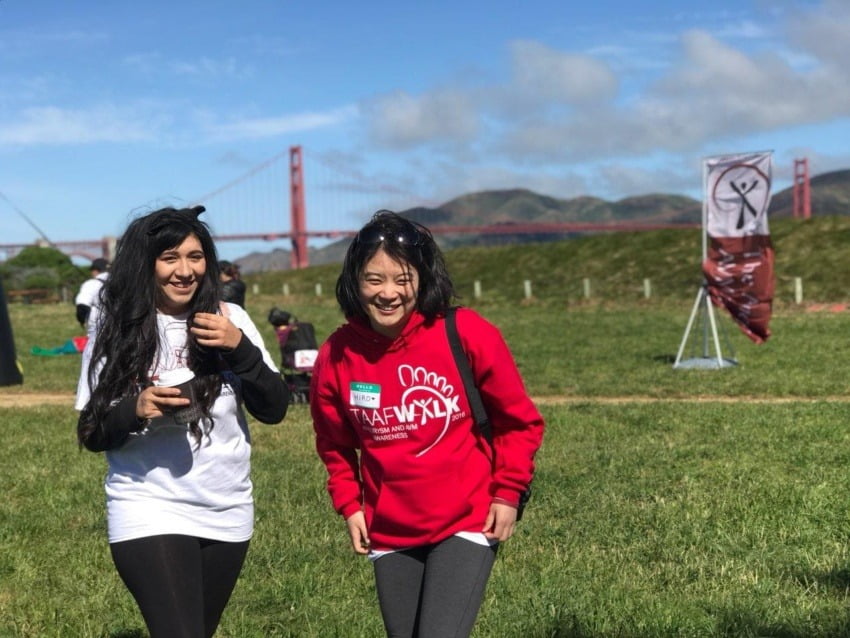 This year’s hashtag/motto for Brain Injury Association of America‘s Brain Injury Awareness Month is #NotAloneInBrainInjury.
This year’s hashtag/motto for Brain Injury Association of America‘s Brain Injury Awareness Month is #NotAloneInBrainInjury.
The campaign for 2016~2017 is “Not Alone“:
The Not Alone campaign provides a platform for educating the general public about the incidence of brain injury and the needs of people with brain injuries and their families. The campaign also lends itself to outreach within the brain injury community to de-stigmatize the injury, empower those who have survived, and promote the many types of support that are available. (Brain Injury Association of America)
This is a powerful and very important message to get across to survivors and supporters alike, especially because Brain Injury is very often an Invisible Disability, where the fact that someone has the disability is not readily apparent from just looking at the person. This means that, more often than not, one will pass a person with Brain Injury and not even realize it. However, according to the Brain Injury Association of America, 1 in 60 people in the US live with a Traumatic Brain Injury related disability.
The term invisible disabilities refers to symptoms such as debilitating pain, fatigue, dizziness, cognitive dysfunctions, brain injuries, learning differences and mental health disorders, as well as hearing and vision impairments. These are not always obvious to the onlooker, but can sometimes or always limit daily activities, range from mild challenges to severe limitations and vary from person to person. Also, someone who has a visible impairment or uses an assistive device such as a wheelchair, walker or cane can also have invisible disabilities.

Having a Brain Injury can cause the survivor and often by extension their caregivers to become more isolated, giving off an impression of being alone. This could happen in may ways, ranging from physical isolation (not having support groups near by, not knowing any other survivors, not being able to access social life due to the brain injury, etc.), to psychological isolation (mental illnesses that come with brain injury such as depression and anxiety, or social relationships deteriorating because of disabilities or social stigma of brain injury).
They may feel alone, disoriented, and forgotten, unsure which way to turn for help, assistance, or resources. This year, I hope that many more survivors and their families and loved ones find that they are #NotAloneInBrainInjury, and that there are options and resources for support.
I was also isolated and felt alone, especially with being diagnosed with Arteriovenous Malformation (with prevalence of only 18 in 100,000… I never thought I’d meet another person with an AVM!). It was not until half a year after my surgery that I realized that there were online active communities of survivors and supporters who provide support and resources for each other. It was from there that I found that there are survivors near and around me, and met face-to-face many of them.
“Not Alone” Campaign & You
You, as a survivor, supporter, or a by-passer of this blog, can help spread Brain Injury Awareness this month, and help the “Not Alone” campaign.
If you are a blogger, perhaps you can donate a small section of your next blog post to Brain Injury Awareness. We exist. In many numbers (over 12 million of us just in the US, as a matter of fact!). Perhaps a few of your own readers have Brain Injury, or know someone close to them who has! If you work in an office, maybe a print-out of the flier at the coffee room, or request the “Friday Jeans Day” to be in honor of Brain Injury Association in your state. There are many things, little and big, that we can do to help spread awareness this month.
Please go take a look at Brain Injury Association of America’s page for #NotAloneinBrainInjury, download toolkits, fact sheets, sound bytes fliers, and and tons of other resources. Put them up, share them with friends, and use them in social media. It will be surprising who may be living with Brain Injury, and feeling “Alone” right now, not knowing where to turn to, or how to find peers to discuss concerns and experiences with, knowing that the other has also lived through similar situations.

With anything it is always extremely helpful to find that you aren’t alone! =3
Indeed, indeed. Not that I wish this experience on people but!
I’m glad you’re bringing more awareness to this! ^^ You’re never alone!
🙂 Thank you!! I’m hoping that if nothing else I’ve done in my life made any impact, at least 100 more people know what that a condition called an “AVM” exists. Haha.
Yes, 10 years this May!! The struggle is so real but others can’t see…thank you for your sharing!!!
Fight on!! <3 <3 Congratulations on your DECADE!! Wow!!